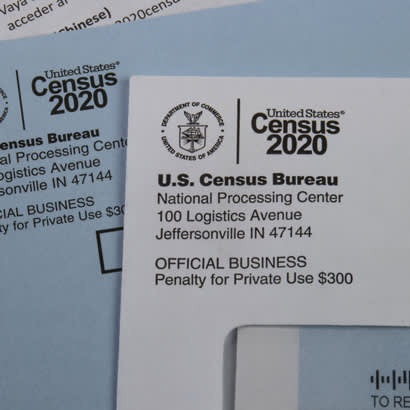
As a professional that spends a lot of my working hours elbows deep in surveys and data, I am naturally drawn to all things Census. But, for those that only know “The Census” as that survey that goes out every decade, the U.S. Census Bureau actually carries out hundreds of surveys every year and has a past dating back hundreds of years.
The first formal census in the United States began August 1790 — more than a year after the inauguration of President George Washington and just before the second session of the first Congress ended, thanks to Article 1, Section 2 of the U.S. Constitution. The then Secretary of State, Thomas Jefferson, directed marshals to the original 13 states, plus districts of Kentucky, Maine, Vermont and the Southwest Territory (Tennessee) to collect the age, sex and race — which was referred to as ‘color’ in the census at the time — of each inhabitant. The final count of that first census — 3.9 million inhabitants — was met with skepticism by both George Washington and Thomas Jefferson as both expected a higher number. (Read more about that first census here.)
Fast forward 230 years to January 2020, when it was time to kick off the 24th decennial survey. Lizzie Chimiugak Nenguryarr, a 90-year-old elder in Toksook Bay, Alaska, became the first person to be counted in the 2020 Census. However, all ground operations were paused just two months later amid the outbreak of COVID-19. As stay-at-home orders, mask mandates and social distancing requirements were put in place, traditional door-to-door and in-person field operations were temporarily ceased. And when it was safe to return to these more personal data collection methods, the public’s ability and willingness to respond to the 2020 Census was “impacted.” Fortunately, with the ability for responses to be mailed or submitted online, the deadline for data collection only needed to be extended by a short two and a half months! And while we may be itching to see the results of this most recent census, the Bureau is already looking ahead to Census Day, April 1, 2030. (See a timeline of Census history here.)
What does this have to do with parks and recreation?
At a cost of roughly $96 per household (more than $15 billion), why do these results matter? What are they used for? And what does this have to do with parks and recreation? The census shows us who we are and the direction we are going as a country. It helps our communities determine where to build everything from schools to supermarkets, parks to parking lots, and from homes to hospitals. Census results have several high-profile applications as well: they are used to reassign (reapportion) seats in the House of Representatives, to realign congressional districts, and as a factor in the formulas that distribute hundreds of billions of dollars in federal funds each year.
While we are all touched as personal residents by these factors, it is that latter point where parks and recreation has a special opportunity to use these results for additional funding, programming and resources. (See the webinar ‘Using Census Bureau Data for Grant Writing here.) (Read ‘Uses of Census Bureau Data in Federal Funds Distribution: A New Design for the 21st Century here.) (Read ‘How Census Data Leads to Local Planning and Funding here.)
While the sheer amount of data collected through the 2020 Census — coupled with the multiple hurdles continuing from the pandemic — has caused some data release delays, an overwhelming amount of past and present information can be found on the United States Census Bureau website now.
Additionally, NRPA has several Census resources we think would be particularly helpful in our Data and Mapping Resource Library for you to explore.
In a future blog post, I will go into greater detail about the vast amount of data available to the public and practical applications for using this data in your agency.
Melissa May (she/her) is NRPA’s senior research manager.

